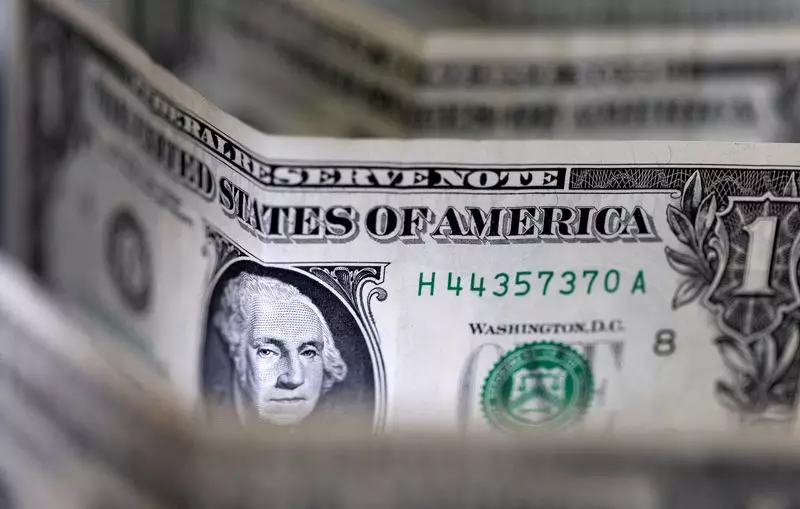In early European trade, the U.S. dollar experienced a slight dip, although it was still set to record its biggest weekly increase in over a month. This rise was attributed to diminishing hopes of a prompt Federal Reserve rate cut. The Dollar Index, which monitors the dollar against a basket of other currencies, saw a 0.1% decline, but was on track for a 0.6% gain over the week – its most significant weekly surge since mid-April. This surge came after recent data revealed a surge in U.S. business activity to its highest level in more than two years during May. As a result, there was a pullback in expectations for a rate cut by the Fed, causing government bond yields to rise. This, combined with concerns over stubborn inflation, weighed down the possibility of loosening monetary policy. Traders shifted their expectations, pricing in almost an equal likelihood of a rate cut or a hold in September – around 46% each – compared to previous projections favoring a cut by over 50%.
Impact on the Euro and Pound
In Europe, the GBP/USD pair edged lower following data showing a more substantial decline in British retail sales in April than anticipated. The adverse weather conditions were cited as a reason for the drop, keeping shoppers away from clothing and sports stores. On the other hand, EUR/USD saw a modest increase after reports of a 0.2% growth in the German economy in the first quarter of 2024 were confirmed. The statistics office noted positive growth at the beginning of the year after a decline at the end of 2023. Analysts predict a possible bullish sentiment on EUR/USD due to potential eurozone inflation and positive outlook on US price dynamics in the coming days. The European Central Bank is expected to kick off its rate-cutting cycle next month.
Asian Currency Movements
Meanwhile, in Asia, USD/JPY experienced a 0.1% increase to 157.07, reaching a three-week high. This advancement followed a rebound from previous lows triggered by government intervention earlier in May. Despite easing inflation in April as spending remained subdued, the yen did not show significant improvement. USD/CNY saw a 0.1% increase, nearing a six-month high, with the yuan’s downward trend somewhat restricted by a more substantial midpoint fix from the People’s Bank of China. The intensified trade war with the U.S., doubts surrounding additional stimulus measures, and heightened tensions with Taiwan exerted selling pressure on the yuan.
The movement of major currency pairs was heavily influenced by economic data releases and central bank actions. Traders closely monitored the developments in the U.S., Europe, and Asia, adjusting their positions based on changing expectations for interest rates and economic performance. The coming weeks are expected to witness further shifts in currency values as key data sets are released and central banks announce their monetary policy decisions. It is crucial for investors to stay abreast of these developments to make informed trading decisions in the volatile forex market.

